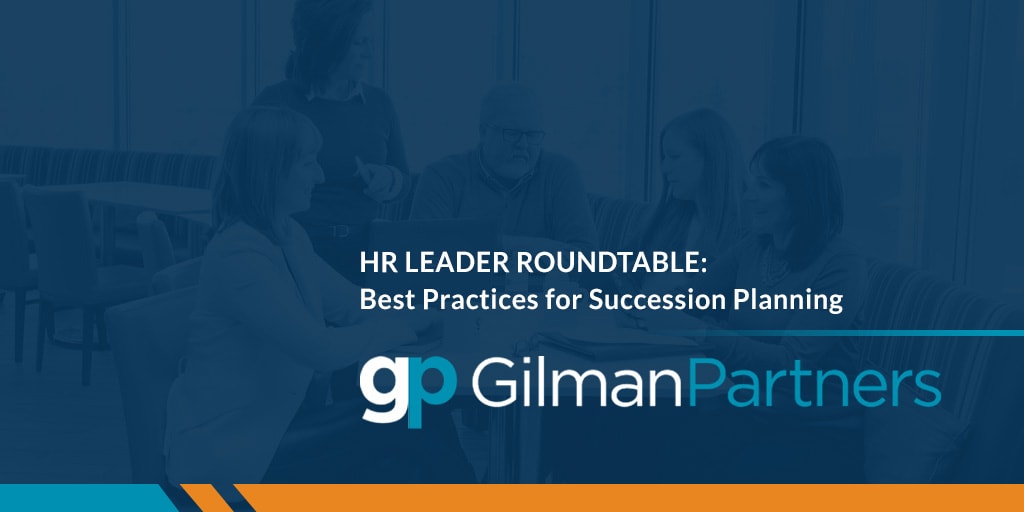We have heard from business leaders that succession planning is becoming critically important as key leaders retire or leave their roles for other opportunities in an active job market. Gilman Partners’ HR Leadership Practice hosted a roundtable discussion on May 17th with more than 30 regional HR leaders to talk about best practices around succession planning. Below are some of the highlights from our discussion.
Embracing Change in Successors and “Fast Forwarding the Job”
Leadership teams are realizing that the “next person in” won’t have all the traits of their predecessor. It may take some influence to convince the leadership team that it’s okay for that person to have a different skillset. In fact – changes in technology and shifts in the business landscape may require very different skills when it becomes time to replace longer tenured employees in critical positions. A key idea was to “fast forward the job” to anticipate what the business will need from the position in the future.
High-Potential Talent Pools
One HR leader shared that her organization views high-potential talent as a pool rather than as successors for specific roles. This approach provides more flexibility to place people into different positions as opportunities arise rather than being locked into a specific path.
Alignment on Development Goals
It was also emphasized to understand what employees want for their own career growth – not just what the company wants for them. Growth opportunities may also require people to stretch their skillsets or potentially change locations if such changes can be accommodated.
The Reality of Imposter Syndrome
An interesting point was made around the reality of “imposter syndrome.” When leaders are promoted to roles they don’t truly believe they deserve, they may have feelings of incompetence despite a work history that speaks to the contrary. It’s a sensitive issue that may not be openly discussed. Investing in Executive Coaching can be an important resource to help successors become more comfortable in their new roles.
Transparency and Communication at All Levels
There was a robust discussion about whether or not to inform people that they’ve been identified as “high potential” for future leadership roles. Transparency can increase engagement and retention, but it also carries risks if people don’t develop as expected. Others who are not so designated may feel slighted.
It was acknowledged that transparent conversations around career development are critical at all levels. It was suggested to do so without using labels tied to their 9-box or other evaluation. Succession plans evolve over time as people and business needs change.
Flexibility and Bias Reduction
Some leaders have a negative reaction when high potential employees take a different career path than their own, leading to unintended bias. For example, fewer people are relocating for growth assignments, so there need to be other approaches to their development. HR can play a key role in influencing leaders to reduce biases and ensure that turning down an opportunity doesn’t exclude employees from future growth. Flexibility and understanding of variable individual circumstances are key.
Developing All Employees
The group emphasized the importance of developing employees at every level. High-potential employees need targeted development opportunities, but those performing as expected also need to be nurtured. Organizations rely on the steadiness and consistency of these core employees.
Assessing Potential
Assessing potential is different from assessing performance. Just because someone excels in their current role doesn’t mean they have the potential for a bigger one. Conversely, a great employee having a rough year doesn’t mean they’re no longer promotable. Stretch assignments and interactions with higher-level leaders can help assess potential. Using behavioral assessments can also uncover leadership skill gaps that need to be prioritized as part of the overall talent development strategy and can also help employees further develop self-awareness.
CEO’s Role in Succession Planning
It was widely agreed that succession plans will be far more effective if supported from the top. The visible commitment of the CEO and Leadership Team will be very beneficial to the process. This level of support sets a precedent for the entire organization and ensures that succession planning is taken seriously at all levels.




